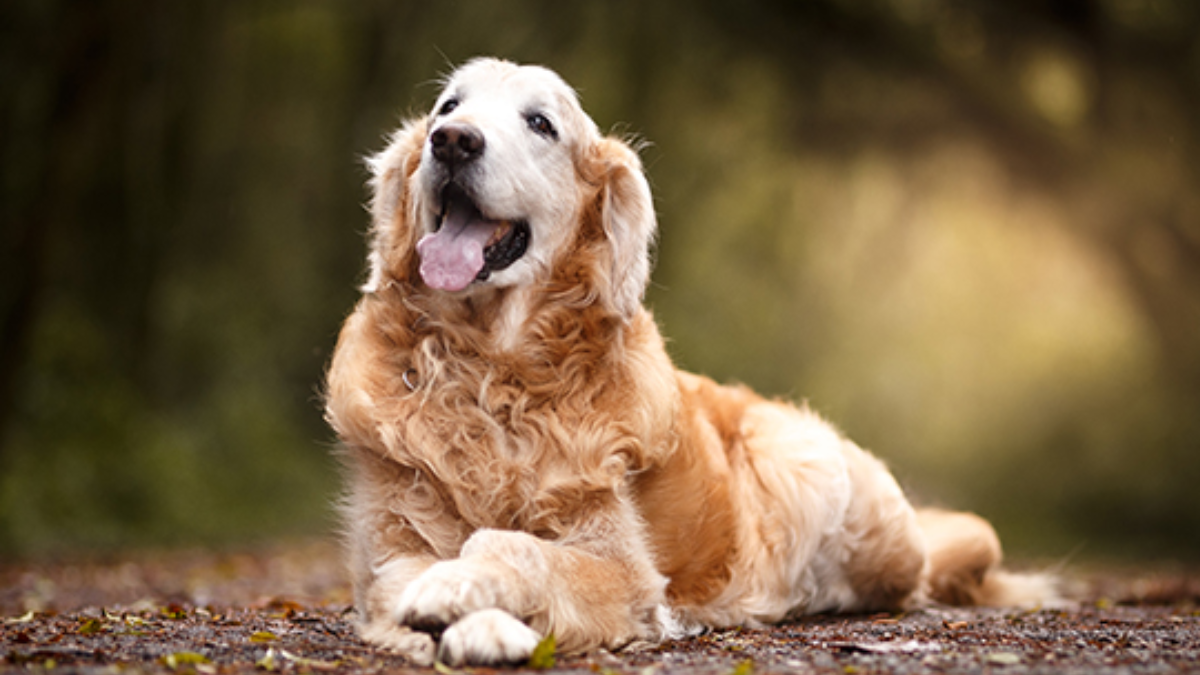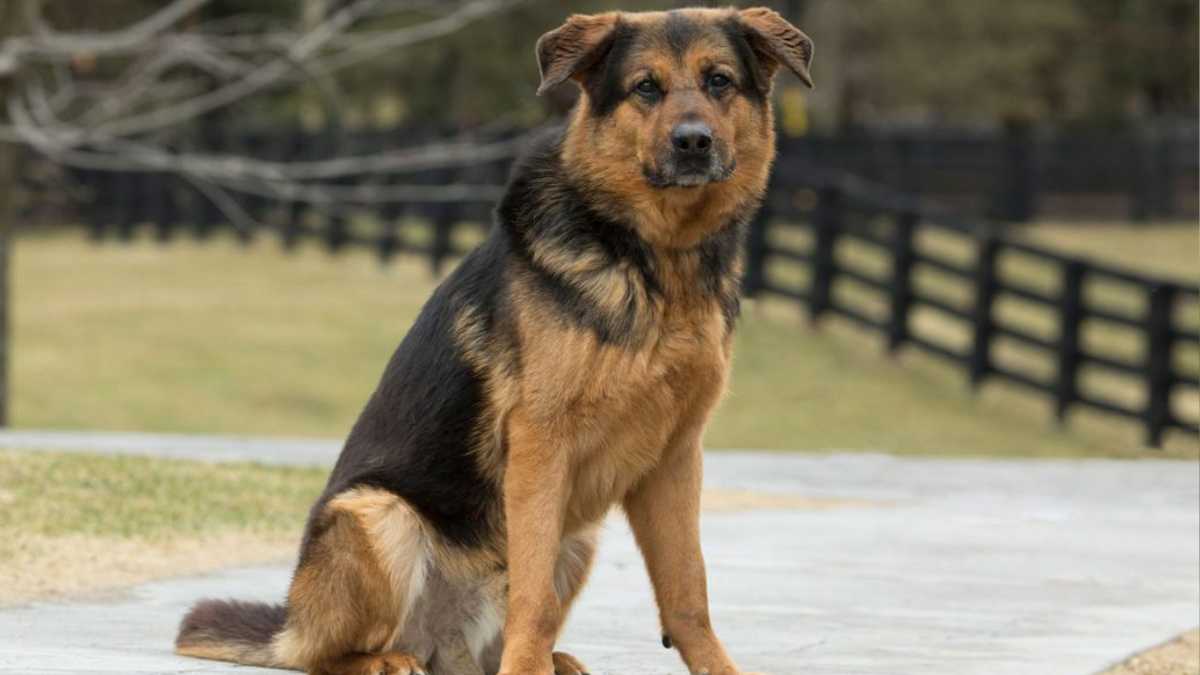As dogs age, their needs change, and they may require more attention and care from their owners. Senior dogs, in particular, may experience mobility issues, joint pain, and other health conditions that can make it challenging for them to navigate their homes. To ensure that senior dogs are comfortable and safe, it's essential to make some adjustments to their living environment.

How to Make Your Home More Accessible to Senior Dogs? This includes providing non-slip flooring, ramps, or stairs to access elevated areas, comfortable bedding, and easy access to food, water, and potty areas. Additionally, keeping pathways clear of obstacles and providing adequate lighting can help prevent accidents. Regular vet check-ups and adjustments to their diet and exercise routine are also important to maintain their health and well-being. By making these adjustments, pet owners can ensure that their senior dogs enjoy a safe and comfortable living environment as they age.
Understanding Senior Dogs' Needs Senior dogs have unique needs that must be met to ensure their well-being. As they age, they may experience vision and hearing loss, arthritis, and other health issues that can impact their mobility. They may also have difficulty with stairs, getting in and out of their bed, or accessing their food and water bowls. By understanding these needs, owners can make adjustments to their homes to make them more accessible for their senior dogs.
Home Modifications for Accessibility Modifying the home can help senior dogs move around more easily and safely. This can include installing ramps or steps to help them get in and out of the house, lowering the height of their food and water bowls, and providing a comfortable bed that is easy to access. Other modifications may include adding non-slip surfaces to floors, installing grab bars in the bathroom, and providing soft lighting to help them see better at night.
Key Takeaways
- Senior dogs have unique needs that must be met to ensure their well-being.
- Modifying the home can help senior dogs move around more easily and safely.
- Assistive devices and tools can also be used to aid senior dogs in their daily activities.

Understanding Senior Dogs' Needs
Mobility Challenges
As dogs age, they may experience mobility challenges such as arthritis, hip dysplasia, or other joint-related issues. To make your home more accessible to senior dogs, consider providing ramps or steps to help them navigate stairs or high furniture. You can also place rugs or mats on slippery surfaces to prevent falls and make it easier for them to move around.
Vision and Hearing Impairments
Senior dogs may also experience vision and hearing impairments, which can make it difficult for them to navigate their surroundings. To help them, make sure your home is well-lit and free of obstacles. You can also use visual cues such as contrasting colors or patterns to help them distinguish different areas of your home. If your dog has hearing loss, consider using hand signals or vibrations to communicate with them.
Comfort and Temperature Sensitivity
As dogs age, they may become more sensitive to temperature changes. To keep them comfortable, provide a warm and cozy bed in a quiet area of your home. You can also use blankets or heating pads to help them stay warm during colder months. Additionally, make sure your home is well-ventilated and free of drafts to prevent overheating or dehydration.
By understanding senior dogs' needs, you can make simple changes to your home to ensure their comfort and safety. With a few adjustments, your senior dog can continue to enjoy their golden years with ease.

Home Modifications for Accessibility
Making your home more accessible for senior dogs is an important step in ensuring their safety and comfort. Here are some modifications you can make to your home to improve your senior dog's mobility:
Ramps and Stairs
Ramps and stairs can make it easier for senior dogs to navigate their way around the house. Ramps can be used to help dogs get up and down stairs or onto furniture, while stairs with a gentle incline can make it easier for them to reach higher surfaces. It's important to ensure that ramps and stairs are slip-resistant and stable to prevent accidents.
Slip-Resistant Flooring
Slip-resistant flooring can help prevent falls and injuries in senior dogs. Consider replacing slippery tile or hardwood floors with non-slip options, such as rubber or cork. Area rugs can also provide traction and cushioning for dogs with arthritis or joint pain.
Supportive Bedding
Senior dogs may benefit from supportive bedding that cushions their joints and provides extra comfort. Orthopedic dog beds with memory foam or egg crate foam can help alleviate pressure points and provide more restful sleep. Raised dog beds can also make it easier for dogs to get in and out of bed without putting extra strain on their joints.
By making these modifications to your home, you can help ensure that your senior dog is safe, comfortable, and able to enjoy their golden years to the fullest.

Safety Measures
Blocking Off Dangerous Areas
One of the most important safety measures to take when making your home more accessible to senior dogs is to block off dangerous areas. This can include stairs, balconies, and other areas where your dog could fall and injure themselves. You can use baby gates or other barriers to keep your dog away from these areas.
Proper Lighting
Proper lighting is also important for senior dogs, as they may have trouble seeing in dimly lit areas. Make sure that all areas of your home are well-lit, especially at night. You can use nightlights or motion-activated lights to help your dog navigate around the house.
Secure Outdoor Spaces
If you have an outdoor space, it's important to make sure that it's secure for your senior dog. Check for any gaps in fences or gates that your dog could escape through. You may also want to consider adding a ramp or steps to make it easier for your dog to get in and out of the house.
By taking these safety measures, you can help ensure that your senior dog is safe and comfortable in your home.
Assistive Devices and Tools
Harnesses and Lifts
As dogs age, they may experience difficulty with mobility, especially when it comes to climbing stairs or getting in and out of vehicles. Harnesses and lifts can be incredibly helpful in providing support and assistance to senior dogs. Lifts can be used to help dogs get up and down stairs, while harnesses can be used to help dogs get in and out of vehicles or to provide support while walking. It is important to choose the right size and type of harness or lift to ensure safety and comfort for your furry friend.
Feeding and Watering Solutions
Senior dogs may also experience difficulty with eating and drinking due to dental issues or mobility problems. Elevated feeding stations can help reduce strain on their neck and back while eating. Additionally, there are specialized feeding bowls designed to slow down eating and prevent choking. Water fountains can also help encourage senior dogs to drink more water, which is important for their overall health.

Grooming Aids
Grooming can become increasingly difficult for senior dogs, especially if they have mobility issues or arthritis. Grooming aids such as non-slip mats, raised grooming tables, and specialized brushes can make the grooming process easier and more comfortable for both the dog and the owner. It is important to choose grooming aids that are safe and appropriate for your dog's specific needs.
By incorporating these assistive devices and tools into your senior dog's daily routine, you can help improve their quality of life and make your home more accessible to them.
Creating an Enriching Environment
Creating an enriching environment is essential for senior dogs to maintain their physical and mental health. Here are some ways to make your home more accessible to senior dogs:
Interactive Toys
Interactive toys can keep senior dogs mentally stimulated and engaged. Choose toys that are easy to handle and manipulate, such as puzzle toys or toys that can be filled with treats. These toys can help keep senior dogs entertained and mentally sharp.

Easy Access to Family Areas
Senior dogs should have easy access to family areas, such as the living room or kitchen. This can be achieved by providing ramps or steps to help them climb onto furniture or by placing their bed in a central location. This will help senior dogs feel included and prevent them from feeling isolated.
Stimulation Through Scents and Sounds
Senior dogs can benefit from stimulation through scents and sounds. Consider leaving a radio or TV on during the day to provide background noise and stimulation. You can also provide scents, such as lavender or chamomile, which can have a calming effect on senior dogs.
By creating an enriching environment, senior dogs can maintain their physical and mental health, stay engaged, and continue to enjoy their golden years.
Routine and Care
Regular Veterinary Check-Ups
Senior dogs require more frequent veterinary check-ups to monitor their health and identify any potential issues early. It is recommended to schedule a check-up at least twice a year. During these visits, the vet will perform a physical examination, blood work, and other tests as necessary. It is important to keep up with vaccinations and parasite prevention as well.
Diet and Nutrition
Aging dogs have different nutritional needs than younger dogs. They may require a diet that is lower in calories and fat to prevent weight gain and obesity. Additionally, senior dogs may benefit from a diet that is higher in protein to maintain muscle mass. It is important to consult with a veterinarian to determine the best diet for your senior dog's individual needs.
Exercise and Physical Therapy
Regular exercise is important to keep senior dogs healthy and agile. However, it is important to tailor exercise routines to their abilities and limitations. Low-impact exercises such as walking and swimming are great options. Physical therapy can also be beneficial for senior dogs with mobility issues. This may include exercises to improve range of motion and strength, as well as massage and other therapeutic techniques.

Overall, routine and care are crucial for ensuring the health and well-being of senior dogs. By providing regular veterinary check-ups, a healthy diet, and appropriate exercise and physical therapy, you can help your senior dog live a happy and comfortable life.
Conclusion:
In conclusion, understanding how to make your home more accessible to senior dogs is paramount for their well-being and comfort. By implementing practical adjustments such as installing ramps, providing orthopedic bedding, and ensuring non-slip surfaces, you create an environment tailored to their needs. Addressing factors like proper lighting and minimizing obstacles minimizes the risk of accidents and instills a sense of security for your aging canine companion. Investing in specialized equipment such as elevated feeding stations and supportive harnesses enhances their quality of life and alleviates any discomfort associated with aging-related conditions.
Prioritizing these modifications fosters independence and strengthens the bond between you and your beloved pet. "How to Make Your Home More Accessible to Senior Dogs" encapsulates the dedication required to ensure their well-being, enabling them to enjoy their golden years with comfort and dignity. By making your home more accessible to senior dogs, you demonstrate compassion and love, providing them with a safe and nurturing environment where they can thrive.
Frequently Asked Questions
- What modifications can I make to my home to help a senior dog with mobility issues?
- There are several modifications you can make to your home to help a senior dog with mobility issues. You can install non-slip flooring, ramps, and grab bars to help your dog move around more easily. You can also provide your dog with a comfortable and supportive bed, and place food and water bowls at a height that is easy for them to reach.
- Which types of ramps are best for older dogs to access elevated areas?
- Several types of ramps are suitable for senior dogs. The best type of ramp for your dog will depend on their specific needs and the area you want them to access. Some popular types of ramps include telescoping ramps, folding ramps, and fixed ramps.
- How can I adapt my home environment to cater to my aging dog's needs?
- To adapt your home environment to cater to your aging dog's needs, you can make modifications such as installing non-slip flooring, providing comfortable and supportive bedding, and placing food and water bowls at a height that is easy for them to reach. You can also install ramps or steps to help your dog access elevated areas and provide plenty of toys and enrichment activities to keep them mentally stimulated.
- What are effective ways to prevent slips and falls for senior dogs at home?
- To prevent slips and falls for senior dogs at home, you can install non-slip flooring, provide your dogs with supportive footwear, and keep their nails trimmed to prevent slipping. You can also use rugs or mats to provide traction and keep your dog's environment clutter-free to prevent tripping hazards.
- How can I create a comfortable resting area for an elderly dog with joint pain?
- To create a comfortable resting area for an elderly dog with joint pain, you can provide them with a supportive and comfortable bed that is easy for them to access. You can also provide them with a heated bed or a heating pad to help soothe their joints and place their bed in a quiet and peaceful area of your home.
- What products are available to assist older dogs with climbing stairs?
- There are several products available to assist older dogs with climbing stairs. Some popular options include ramps, stair lifts, and harnesses. The best product for your dog will depend on their specific needs and the layout of your home. It's important to consult with your veterinarian or a professional dog trainer before selecting a product to ensure that it is safe and effective for your dog.






